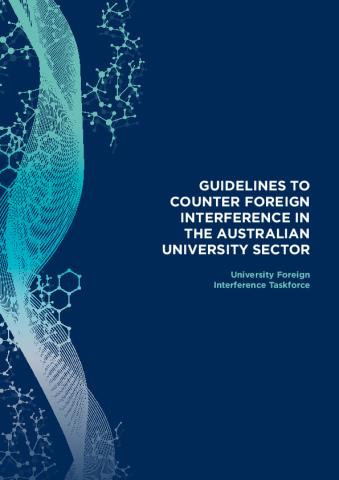The Guidelines to Counter Foreign Interference in the Australian University Sector (the Guidelines) were developed for, and in partnership with, the Australian university sector to uplift the sector’s awareness and resilience to foreign interference.
On this page:
The Guidelines are intended to be enduring, specific and measurable, and consider the evolving risks of foreign interference. They support universities to develop new, or examine existing tools, frameworks and resources to assess and mitigate foreign interference risks. The Guidelines promote greater consistency across the sector and should be applied by each university proportionate to their institutional risk.
Guidelines to Counter Foreign Interference in the Australian University Sector
These guidelines have been developed for, and in partnership with, the Australian university sector to help manage and engage with risk to deepen resilience against foreign interference in the university sector. They are designed to build on risk management policies and security practices already implemented by Australian universities, as well as assist decision makers to assess the risks from foreign interference.
Implementing the Guidelines
The following guidance material is designed to assist universities to implement each component of Guidelines. The material provides specific considerations for decision makers to refer to as appropriate to their circumstances.
1. Governance and risk frameworks
The Guidelines are designed so that universities can integrate foreign interference considerations into existing frameworks, policies and procedures.
2. Communication, education and knowledge sharing
The Guidelines encourage universities to support a culture of foreign interference awareness whilst promoting the free exchange of ideas.
3. Due diligence, risk assessments and management
Comprehensive risk assessment can reduce exposure to, and the likelihood of, foreign interference while engaging internationally. The Guidelines encourage universities to develop a culture of continual disclosure and transparency.
4. Cybersecurity
The Guidelines emphasise the importance of strong cybersecurity practices which protect information systems against unauthorised access, manipulation, disruption or damage.

